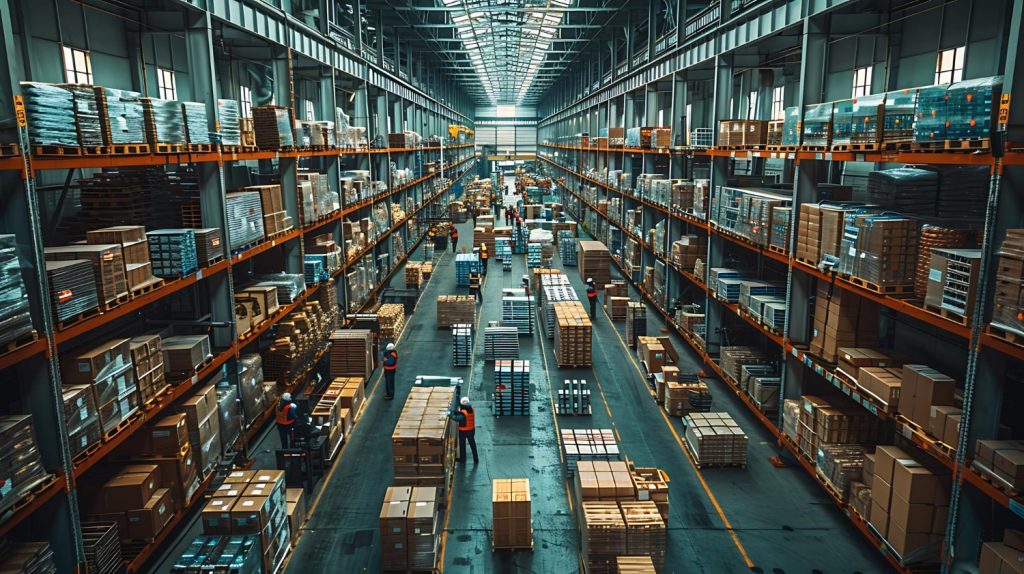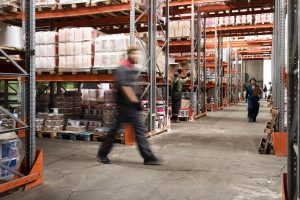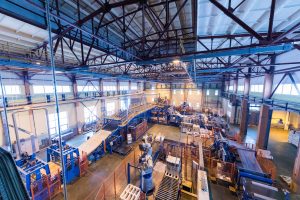Companies are under intense pressure to fulfill customer demands quickly. This has led to the proliferation of micro-fulfillment centers (MFCs) across the USA.
According to ResearchAndMarket’s study, micro-fulfillment center installations will grow over 20x by 2030.
To keep pace with rising demands, companies are automating micro-fulfillment centers because that helps them:
- Improve speed and productivity: Automated MFCs assist companies in faster product retrieval and packaging, reducing processing time and errors and improving worker productivity.
- Reduce operational costs: Through automation, companies can reduce overhead costs and eliminate operational inefficiencies, resulting in significant savings.
- Enhance customer experience: Automation can enhance customer satisfaction and overall experience by fulfilling orders promptly, minimizing order errors, and reducing delivery time.
- Ensure worker safety: Automated technologies like autonomous mobile robots and picking robots reduce the risk of injuries and accidents and ensure worker safety by lifting and carrying heavy products in MFC.
Technologies Used To Automate Micro-Fulfillment Centers
To automate MFCs, companies use technologies such as:
- Autonomous Mobile Robots (AMR): AMRs navigate through MFCs and easily retrieve products and totes from the human workforce. They can also manage multiple totes simultaneously, making it easier for companies to accelerate order fulfillment. The major advantage of an AMR is its flexible deployment. Due to its size, mobility, and adaptability with different racks, it can easily fit into different MFCs.
- Automated Storage and Retrieval Systems (AS/RS): Typically, AS/RS helps pick full pallets in large warehouses. In MFCs, companies can use it to retrieve totes and send them to pickers to segregate and allocate goods. It plays a pivotal role in accelerating the order-picking process.
- Artificial Intelligence and Machine Learning (AI/ML): AI/ML can help companies identify demand patterns, forecast demand in real-time, and optimize AMRs and AS/RS to meet customer needs.
- Automated Picking Robots: Automated picking robots help automate end-of-line picking processes. They are used with AS/RS or AMRs to receive or deliver totes. By automating these rote processes, these picking robots accelerate the picking and packing process even during labor shortages and enable the workers to focus on other critical tasks.
While these technologies automate processes like picking and packing in MFCs, companies must understand that it is different from automating traditional warehouses. So, although functional, the same technologies may not work well for MFCs.
Let’s understand the differences in detail and find out what companies can do about it.
Five Reasons Why Automation Of Micro-Fulfillment Centers Are Different?
Automation solutions designed for large warehouses are not perfect for MFCs. Here are five reasons for that.
- Agility
Unlike traditional delivery, which forecasts demand in advance, MFCs deal with micro-trends daily. It has to be agile enough to meet unexpected demands daily. MFCs would need automation solutions that seamlessly integrate with the demand planning engine and manage different types of SKUs and orchestrations based on demand to improve agility. Additionally, they would require AI/ML to analyze data, predict demand patterns, and improve fulfillment.
- Intelligent automation systems
Due to limited space, automated systems in MFCs might not always have the required items to fulfill orders immediately. Thus, MFCs would need an automation technology with mixed-mode fulfillment capabilities. The automation solution must be intelligent enough to combine different picking methods to gather necessary items from various storage locations and fulfill orders on time.
- Space
Compared to traditional warehouses that span 300,000–350,000 square feet, MFCs are significantly smaller. Unlike large warehouses on the outskirts, MFCs are located in urban areas closer to the customers’ destinations. Hence, solutions like traditional AMRs, AS/RS, and goods-to-person systems might not be helpful. They are space-intensive. These solutions must be tailored to fit within a small space below 10,000 square feet.
- Integration and installation
Due to design variances and lack of compatibility, integrating automation solutions with existing warehouse and order management systems can be complicated. This could lead to delays in data exchange and impact order fulfillment. The automation solutions must be easy to install and should integrate seamlessly with existing systems.
- Quality control
Since MFCs operate in a fast-paced environment, maintaining quality control and order accuracy can be challenging. Companies are also expected to adhere to the constantly changing industry regulations and safety protocols, further complicating MFC management. To address these challenges, companies must invest in automation solutions specially designed to improve operational efficiency and compliance. It must enable companies to maintain quality control and fulfill orders efficiently.
How Carte+ Can Solve These Automation Problems And Make MFC Implementation Successful?
Limitations like space constraints could hinder the MFC automation efforts.
However, companies can overcome such challenges using automation solutions tailored to MFCs.
Choosing the right automation solution and service provider is the need of the hour.
There are hundreds of tote-to-person vertical autonomous robotics solutions available to companies.
However, not all solutions are designed to support 300 units per hour or retrofit with existing racking. Some solutions also require extensive floor preparation, making MFC installation and automation difficult.
MFC automation shouldn’t involve overhauling the entire operations or space design.
Companies need a solution that can retrofit existing racking, doesn’t involve floor preparation, and handles over 600 units per hour to meet customer demands.
Carte+ ticks all those checkboxes.
Industry experts with decades of experience in robotics, deep tech, and supply chain have designed Carte+. Hence, it’s different from other MFC automation and order fulfillment solutions.
Carte+ can help companies overcome automation challenges by:
- Optimizing floor space utilization: Since MFCs occupy less than 50,000 square feet (some 2,000 square feet) of floor space, Carte+ is designed considering the space availability. It is designed for compact, urban areas with limited floor spaces and helps easily navigate the limited floor space to pick up and pack goods.
- Moving materials quickly: Carte+ eliminates the need for manually locating, picking, and packing goods. It navigates through the small spaces and accurately locates, picks, and packs products.
- Reducing time-to-deployment: companies have little time to install MFCs and make them operational. This must be done within a short turnaround time to keep pace with customer demands. Carte+ solves this problem. Since no floor space preparation is required, Carte+ can be installed and made operational in less than six weeks.
- Improving throughput: Carte+ can quickly achieve a throughput of 450 totes per hour by streamlining the picking and packing process. It also supports kitting (bundling items together), enabling companies to increase the pace of fulfilling orders without compromising accuracy.
Contact us if you plan to scale your business and automate MFCs. We will be happy to help.





